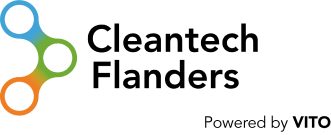To become climate-neutral by 2050, Europe’s energy supply needs to be decarbonised as effectively as possible. In the coming decade, the EIT will therefore continue to stimulate and accelerate much-needed cleantech innovations to achieve this.
Over the last 10 years, the energy community of the European Institute of Technology (EIT) has funded the development of a strong and extensive network of organisations (companies, research institutes but also educational institutions) that are helping to shape the energy transition in the EU. In this way, by bringing people and resources together, EIT InnoEnergy is stimulating and accelerating innovations that bring a climate-neutral economy and society within closer reach. New ideas, products and services that make a real difference are emerging from the community. And it is becoming fertile ground for (new) companies and people to successfully bring these innovations to the market.
An impressive portfolio
As a catalyst for cleantech innovation, EIT InnoEnergy is not only contributing to the transition to carbon neutrality by 2050, but is also ensuring sustainable economic growth and employment, strengthening European competitiveness and ensuring a secure energy supply.
In the past ten years, fully 480 innovations have been realised and brought to the market. This was often accomplished by innovative cleantech start-ups – indeed, InnoEnergy’s start-up portfolio is one of the largest in the world. Bringing innovations to market has been stimulated, inter alia, by de-risking business cases and shortening the time-to-market.
The European Battery Alliance (EBA) was set up by InnoEnergy in 2017 with the aim of bringing together all stakeholders involved in the battery value chain – from the extraction and processing of basic raw materials to recycling – and initiating joint projects. Indeed, control over the battery value chain, including through a dedicated battery industry, is vital for Europe. Not only for the transition to a sustainable energy supply, but also for the competitiveness of the industry. The collaboration has already borne fruit, as evidenced by the recent start-up of the Northvolt ‘gigabattery’ plant in Sweden.
The success of the EBA left InnoEnergy hungry for more. This led to another initiative being set up: the European Green Hydrogen Acceleration Center (EGHAC). This centre focuses on innovations that help green energy-intensive (and hard-to-sustain) sectors such as the steel and cement industries. In the flagship H2 Green Steel project, the EGHAC is bringing together relevant partners to establish an economically viable value chain for carbon-neutral, ‘green’ steel. This is done by the partners through intense cooperation in which the benefits, but also the risks, are shared.
Another example of industrial cooperation that has emerged from EIT InnoEnergy is the European Solar Initiative (ESI). This aims to redevelop (or more accurately, resurrect) a strong solar cell industry in Europe, once again for the entire value chain. The industry needs to help the EU install around 20 gigawatts of new solar power capacity every year in the coming years.
It is clear that decarbonising the energy supply will not be possible without innovation. In this regard, EIT InnoEnergy is focusing on strategic industrial value chains, among other things. And it will continue its efforts in this regard.
Also in Flanders
EIT InnoEnergy has also been very active in Flanders over the past decade. One striking success was the Genk-based start-up Act&Sorb. This company developed a sustainable and high-quality process for recycling wood waste, such as MDF. It involves upgrading the waste to activated carbon, which can then be used in filters for air, water and soil cleaning technologies. What started out as a rough-hewn idea a few years ago has now developed into a large-scale production facility.
Another innovative Flemish start-up in EIT InnoEnergy’s portfolio is The eCloud Company in Jabbeke. This company developed a now patented system for authenticating electric vehicles and power sources for charging them. EV users can plug their vehicle into any (standard) power outlet, and smart software will calculate the power consumption and handle the payment. This is giving a boost to the roll-out of electric mobility.
In 2022, EIT InnoEnergy will continue to look for new start-ups to help them realise and, above all, market their innovations. And in the meantime, the community is also building for the future by training young people. Over the past 10 years, students from more than 100 countries have been updating their knowledge on energy innovation at the EIT InnoEnergy Master School. More than a thousand graduates are now working in key positions in the European energy sector.

Jacob Ruiter, CEO for the Benelux at EIT InnoEnergy



